Finnish pupils have shortest classes and best results at PISA tests – Reforms in Serbia focus on digital competences and outcome-oriented education as well
Source: eKapija
 Wednesday, 30.05.2018.
Wednesday, 30.05.2018.
 15:39
15:39
 Wednesday, 30.05.2018.
Wednesday, 30.05.2018.
 15:39
15:39
Math class at Lauttasaari primary school (Photo: Ivana Bezarević)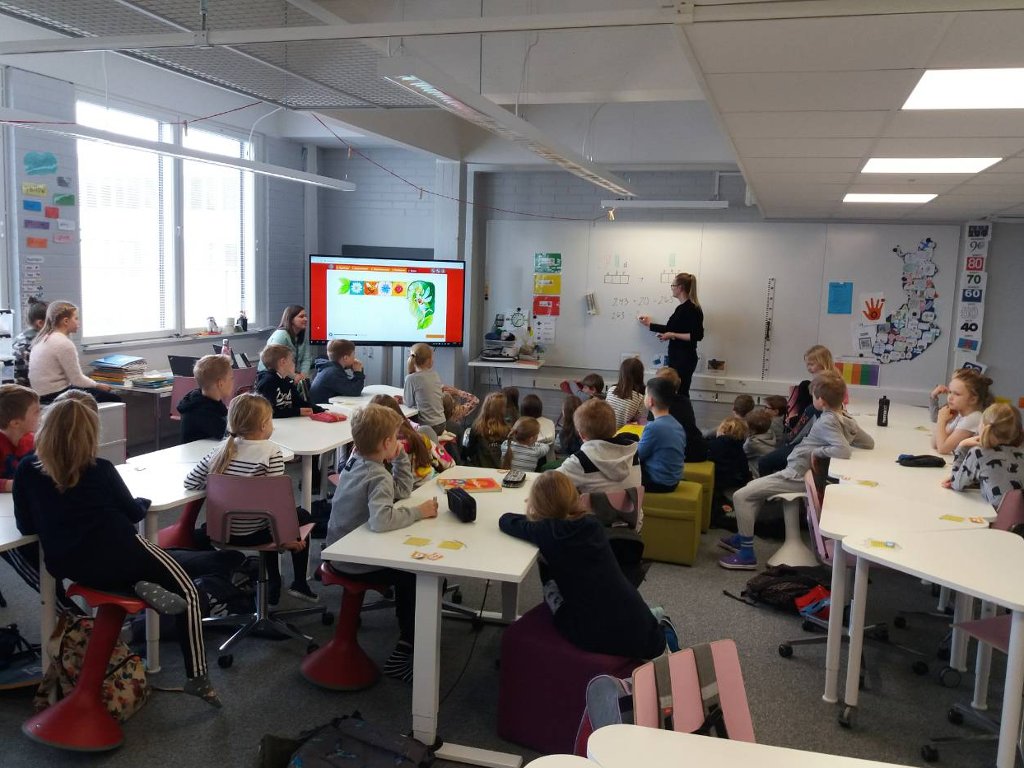

This is what the second-grade math class looks like at Lauttasaari primary school in Helsinki, recently visited by eKapija. The warm atmosphere, the lack of the usual rows of desks, comfortable stools in place of chairs, an occasional lazy bag, LED screens, a piano...
– It may seem strange to you that the children are not wearing any shoes, but the idea is for them to come to school and be what they are – says Eeva Maija Ainikkamaki, one of the teachers.
– Pupils have different needs and we try to provide each of them with what they need. A lot of our teaching time is dedicated to social skills – this is the first time in their lives that they are working in such an environment and it is therefore important for them to learn how to function within a group, whether they like someone or not.
The biggest primary school in Finland implements innovative methods by combining two classes into one. Teachers work in pairs, and as is the case with most educational institutions in this country, the classes are flexible, using ICT tools as much as possible and providing pupils with a lot of room for independent learning. This means that learning is not limited to the classroom, books, papers and tests. That all this is not even necessary is confirmed by the fact that the smallest number of classes in the world and the relaxed, interactive classes lead to the best results of Finnish pupils at PISA tests in Europe.
A new curriculum has been in effect in this country since 2016, defining several key areas, while further emphasizing ICT competence, the so-called working life skills and entrepreneurship. For example, Finnish pupils are taught how to program from the first grade, and computers and tablets are used regularly during classes.
These topics are current when it comes to the school system in Serbia as well, especially now, when a new program is to be implemented come autumn in the first and the fifth grades in primary and secondary schools. The new features in the curriculum, to be implemented this September, pertain to the acquiring of competences similar to those targeted by one of the best educational systems in the world – Finland. Serbia is only just starting, however, and as it usually happens, changes are slow here, which is why the experience of Finland can be of great use for the country.
– The trend now is “digital first”, which means that education is accompanied with the so-called learning management system, the acquisition of digital skills, and the new curriculum places emphasis on outcome-oriented education – the Government of Serbia says for our portal.
First electronic school books to be implemented in Serbia in September
The implementation of electronic school books will be one of the first new features in the modernization of Serbia's education system. This type of classes will be carried out beginning with September in 2,000 classrooms in Serbia, and the pilot program implemented by the Serbian Ministry of Education should encompass around 100,000 pupils, according to our source in the government. The requirement is for schools to be equipped with the necessary infrastructure.
Finnish pupils regularly use computers in classes (Photo: Ivana Bezarević)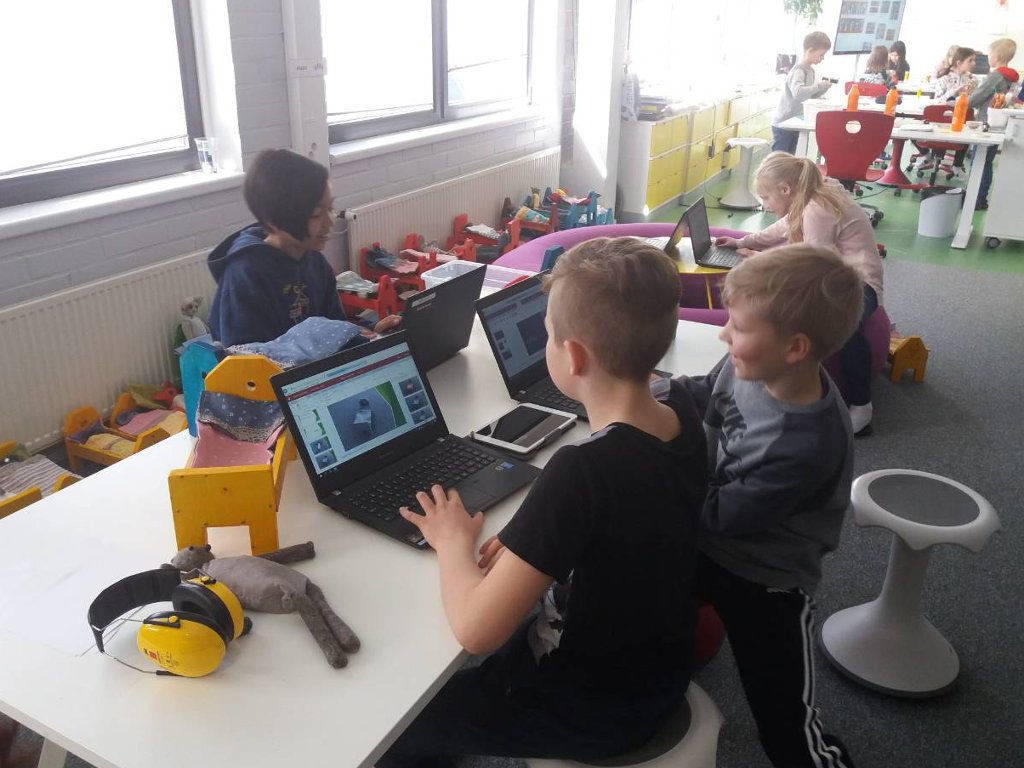

Why such reforms couldn't have been implemented earlier in Serbia, although they are a rule, rather than an exception, in the world, is explained by our source with the fact that there is still resistance to switching from paper and pen to the next level.
– There are still those who believe that children should take stacks of books to the school and that this is the best way to learn, which we are now trying to change. Many countries, Russia among them, had similar initiatives back in 2007. No doubt, we are very late, especially in comparison with systems such as the one in Finland.
Perception, however, is only one of the obstacles. Talking about electronic school books, our source says that publishers are for the most part unprepared as well. They are now trying to catch up and have electronic books for the first and the fifth grade ready by September 1.
– Furthermore, teacher education will possibly be the key factor. This year, we are training slightly over 2,000 of them for the pilot project of electronic school books and the training for reforms of the curriculum in primary and secondary schools is being carried out simultaneously in the direction of digital competences, outcome-oriented education, project education, which entails giving tasks to children, having them form groups around projects and develop inter-subject competences through them. We are looking at plenty of big changes in the entire education system, where digital school books will be only one of the tools – the government points out.
Importance of teaching staff
All things considered, the reform process in Serbia will largely depend on teachers themselves. The very opportunity provided to pupils in the first and the fifth grade in primary schools has been conditioned primarily on the readiness of teachers to get involved in the process, as the selection of 2,000 classrooms to be equipped for this program depends precisely on the educators who have applied for it.
– There's a teacher from Novi Pazar, who was the first one to apply and ask to to be involved, but there are certainly those who have trouble operating a computer as well. That's why we've decided to start the pilot project with those who are the most motivated – our government source says.
It's the teaching staff that has played possibly the decisive role in making the Finnish school system so successful. Teaching is a highly valued profession in this country and very hard to gain access to. In addition to 5 years of higher education, teachers are required to have the right personality type, to know the education system and to be creative and dedicated, as they are given the freedom to design the curriculum themselves.
– We believe that teachers need to be given a high degree of autonomy in their job – says Aki Tornberg, Senior Ministerial Adviser at the Ministry of Education.
– When teachers are well educated and when you trust them, good results follow. We do not put pressure on educators, they do not put pressure on pupils, who are not given regular tests. We provide teachers with the freedom to do their job the way they think is the best, and we give children room to grow up. Finland has the shortest school day and not much time is spent on formal education, and the results are still great.
Teacher Miia Liisa Wanens with her pupils (Photo: Ivana Bezarević)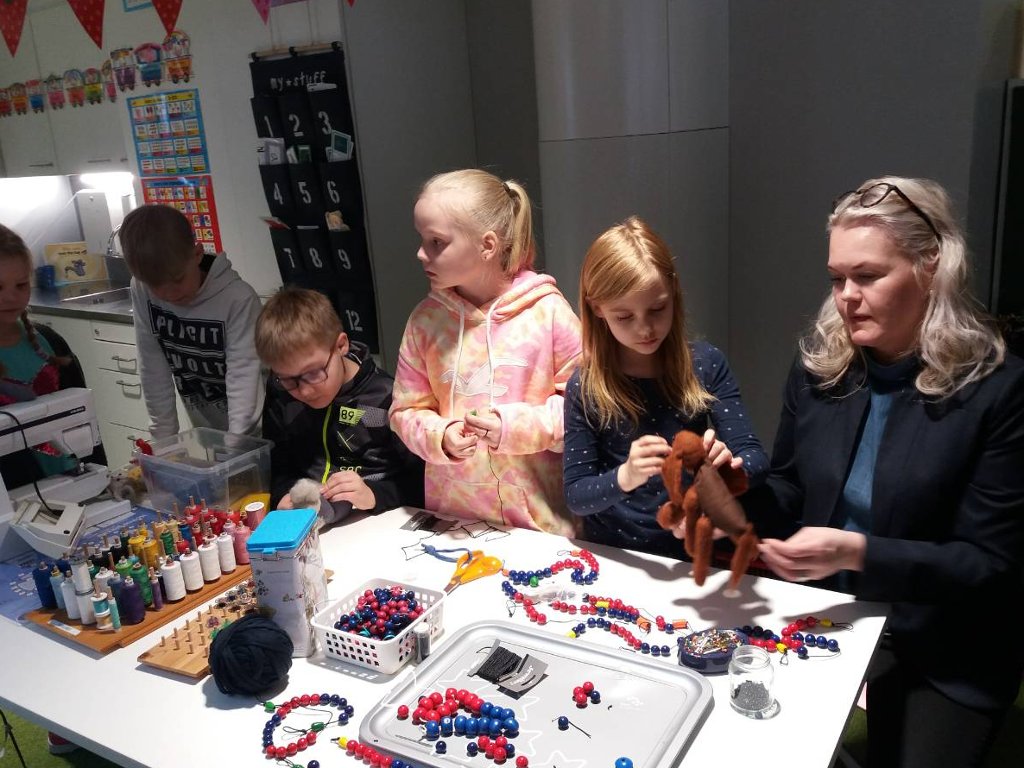

– Us teachers are here to help the children, to direct them and provide them with basic knowledge. Working together is very important and I tend to not sit in front of them, but among them – says Miia Liisa Wanens, who has been teaching for 20 years now.
She teaches children to handcraft items, and not small one either, as she explains, but one big item throughout the school year.
– For example, we are making a toy and a bed for it over the entire year. This way, children learn to think about the process and concentrate on it. This has an impact on their creativity – problem solving, organizing activities, choosing materials, learning techniques, and they work together and discuss the the project among themselves... They also create a portfolio in the form of power point presentations, presenting what the goal was and whether they've managed to fulfill it.
Acquiring real competences
The entire Finnish education system is in fact based on the active roles pupils have in the process of learning. Is this clear enough, should I exercise more – are just some of the questions they use to evaluate themselves. A fourth of the classes of all subjects are held in English, they don't have more than several minutes worth of homework a day, and the grading system as we know it is eschewed, as they believe that the learning process takes an entire year.
Alex, an eight-year-old attending Lauttasaari, finds computer lessons the most interesting.
– It's nice when we use a computer or an iPad in classes, as we don't have as much access to them at home. We are learning through educational games, we make presentations... – this second-grader says, while his friend Linnea adds that she likes that they are able to share knowledge among themselves this way and to send each other emails.
Unlike Finnish pupils, those in Serbia are said to be digitally skilled, but not digitally competent. Although most of them spend a good part of each day using an electronic device, they primarily use them for fun, and they also use computers much more at home than at school.
Finnish schools, unlike those in Serbia, have computers for all children, and pupils learn programming from the first grade, within the math classes, so that they would master the basics – simple operations and how to use computers.
In Finland, classrooms are not the only places for learning (Photo: Ivana Bezarević)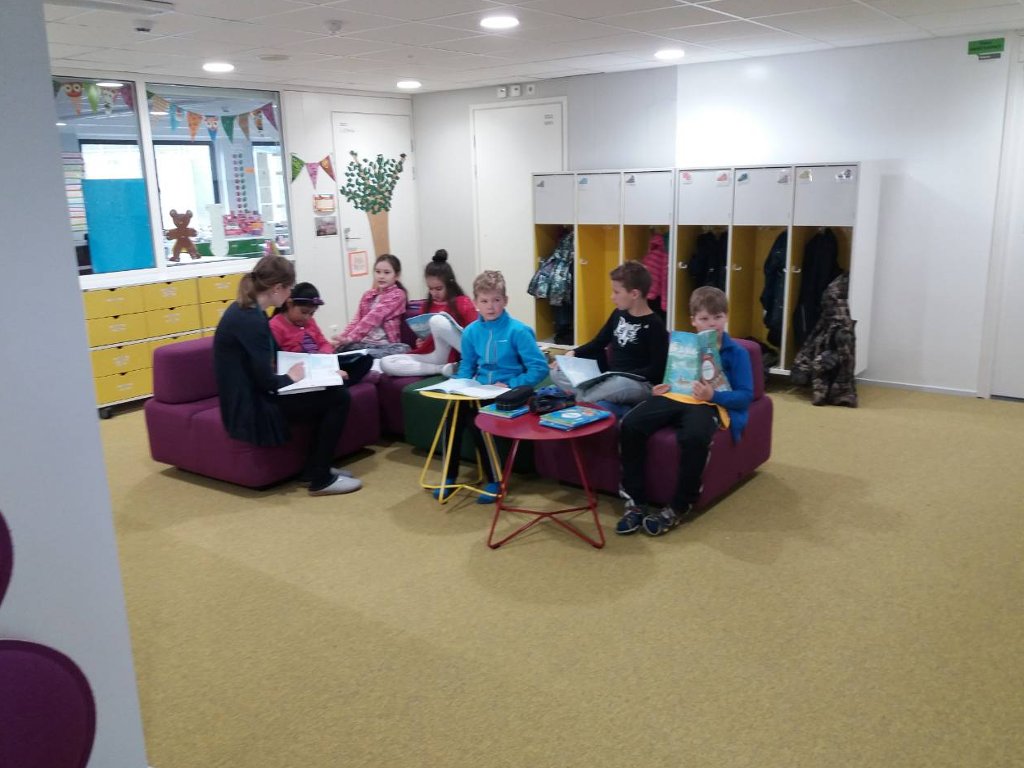

– We are focused on having the education in the fifth grade go as planned this school year, so that we would be able to implement this subject as mandatory for pupils in later grades in the upcoming years – our government source says and adds that just learning to code is not the point, but to learn to think in algorithms, analytically, so that the child would be able to unpack the problem and analyze causal links.
– What we're trying to do is not to equip children with book knowledge, but with competences required by the market, to teach them how to learn and think critically.
Market changes accelerating reforms
The new curriculum in Serbia starts this school year in the first and the fifth grade in primary and secondary schools, whereas changes should by cyclically implemented in other grades over the next four years as well.
In Finland, curriculum reforms are carried out each 10 years, and their Ministry of Education is also considering having this period shortened, as everything is changing increasingly fast these days.
Aki Tornberg, Senior Ministerial Adviser at the Finnish Ministry of Education (Photo: Ivana Bezarević)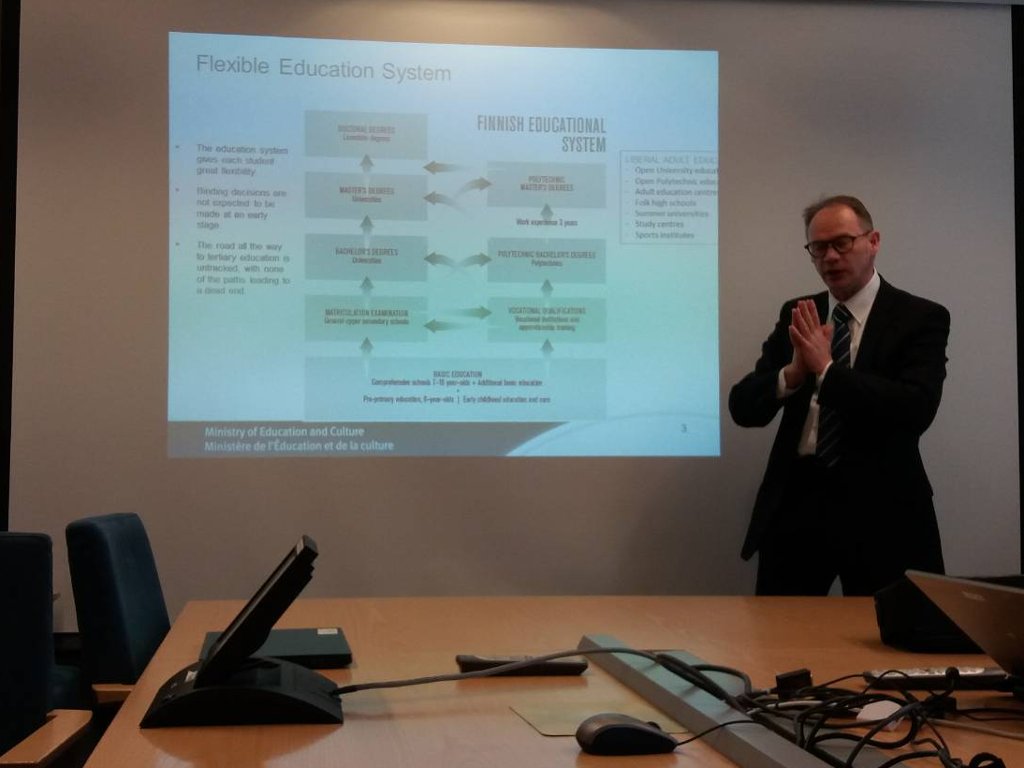

– We are aware that professions of the future are somewhere between the existing ones. Here, for example, biotechnology is growing at an incredible rate and we know that there are many fields in our industry that operate within this discipline. Innovations occur there and it is crucial to know how to develop new skills and how schools and the education system should react.
The more participants in the reforms there are, the better the results will be, and there will also be less resistance, Tornberg is clear. The latest curriculum in Finland was published online before it was completed, because, as our interviewee points out, they wanted to get as many comments from as many participants – teachers, pupils, parents, associations etc.
Since Tornberg has spent some time in Serbia, also in the education sector, we asked him if Serbia could use the experiences of the Finnish system in the reforms and where to start.
Tornberg answers that, although they are one of the most successful education systems in the world, in Finland, they also largely use the experiences of others.
– We are carefully following what is going on in the EU, which ideas are being developed, we discuss them and try to modify our system. Good ideas and experiences, we are sure, can and should be implemented everywhere in the world, and then it all depends on how you will adapt such a system to yours – he points out.
– Comparing our two systems – our interviewee concludes – the way schools are organized could be similar. Each system has its special features, but the experiences of other countries could largely help in establishing and organizing the curriculum. For this reason, it is very important to examine how others work and to share knowledge. The crucial thing, then is to share ideas and to initiate reforms, especially at the beginning, so as to know where to start from.
Ivana Bezarevic
Companies:
 Vlada Republike Srbije
Vlada Republike Srbije
Tags:
reforms of education in Serbia
new curriculum for first and fifth grade in primary and secondary schools in Serbia
Ministry of Education of Finland
education system in Finland
Finnish education system
education system in Serbia PISA tests
Lauttasaari primary school Helsinki
Eeva Maija Ainikkamaki
electronic school books
programming in schools
outcome oriented education
digital competences of pupils
Miia Liisa Wanens
equipping schools in Serbia with hardware
Aki Tornberg
project education
analytical thinking in children
inter subject competences
Comments
Your comment
Most Important News
Full information is available only to commercial users-subscribers and it is necessary to log in.
Follow the news, tenders, grants, legal regulations and reports on our portal.
Registracija na eKapiji vam omogućava pristup potpunim informacijama i dnevnom biltenu
Naš dnevni ekonomski bilten će stizati na vašu mejl adresu krajem svakog radnog dana. Bilteni su personalizovani prema interesovanjima svakog korisnika zasebno,
uz konsultacije sa našim ekspertima.


 Izdanje Srbija
Izdanje Srbija Serbische Ausgabe
Serbische Ausgabe Izdanje BiH
Izdanje BiH Izdanje Crna Gora
Izdanje Crna Gora


 News
News






